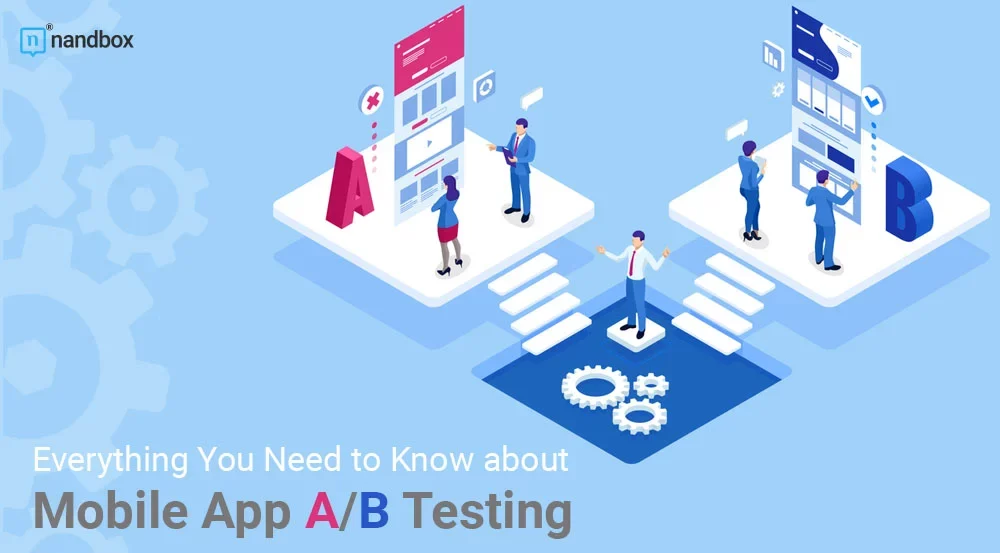You want your app to function optimally, especially if it’s new on the market. While perfection isn’t always attainable, you can do your best by testing it in various ways. Testing your app before launch will help prevent issues from arising, like crashes, bugs, missing information, and more. One type of testing that has been popular for over a century is A/B testing. This article will guide you through mobile app A/B testing.
What is A/B testing?
A here stands for one version, and B for a second version. Known as split testing, you make two versions of your mobile app: one main version and a modified one. Then, two groups of testers are given one version each. By testing them and collecting data and statistics, you can tell which version will perform better in the market.
For example, if you want to create a monochromatic color palette in your app, but aren’t sure if it will perform well, you could show one version with that one color and another multi-colored version and hear the users’ feedback.
Or, if you’re making an app with ads, you can test different banners to determine which one the testers prefer.
While A/B testing is now mainly used in marketing, other industries also use it, like software development.
Types of A/B Testing
All A/B testing for mobile apps is the same, with two versions of an app being tested by two groups of users. However, the testing can have one of two purposes.
- In-app A/B testing: This type entails testing the app’s UI and UX and how it impacts the specified metrics, such as engagement, Lifetime Value (LTV), retention, and others.
- Marketing A/B testing: This one tests the effectiveness of marketing campaigns. For example, it can evaluate which copies or messages get the most engagement.
Benefits of Mobile App A/B testing
The main benefit of A/B testing is that it eliminates guesswork and relies less on gut instinct. It utilizes data and statistics that can impact the app’s future on the market.
With A/B testing, app developers and marketers can understand the impact of various approaches on different types of audiences. That way, they can understand their users’ personas and behaviors and optimize their app accordingly.
It also helps developers understand the impact of a new feature, function, or design choice on the target audience. And it informs marketers what types of engagements work better for the users.
If app developers start A/B testing early in the development process, they can learn which elements to emphasize and which to disregard altogether.
How to Carry Out Mobile App A/B Testing
Do Research on the App
The first thing to do is to determine what you want to test on the app and the objectives of this test. Then, you have to set a goal and decide if that objective will meet the desired goal. This will help you manage your expectations without feeling like you’re wasting your money or time.
To develop a hypothesis, you need to determine the problem you want to solve as a starting point. Your research will help identify which features or functions need to be used as variables. For example, your research could lead you to believe that people engage better with fewer colors on the app— just an example. You still need to put it to the test to find out if it works for your app.
Determine what Differentiates the Two Versions
Also known as a variable, you should have a clear vision of the two versions with the motive of each. When introducing the app variants, specify and mention the problem you want to solve by testing the two variants. In the colors example, you want to learn which engages users more and/or increase session time.
Know and Segment Your Audience
Before doing an A/B test, you should be well aware of your target audience and user persona. The next step involves dividing them into two groups, preferably a large group, to test the two variables. As we mentioned, each group will get a different app version.
Start the test
Now that you have every part figured out, you can start the test. It’s vital to have clarity during the process and remember the main objective, which is getting people to install the app in most cases. However, you should also analyze metrics like engagement, session time, and lead conversions. In most cases, you have more than one objective because you also want people to use your app and subscribe to your service if applicable, not just install it.
For example, a new feature in your app could succeed in increasing session time but not in lead generation. In that case, you need to make modifications to meet both goals simultaneously. This brings us to the next point.
Modify the Hypothesis
Now that you’ve run the test, the hypothesis is no longer hypothetical. You can take the results and devise a new hypothesis to test. Let’s say that the app with the new feature was a clear winner. You can use that information for the next round by testing it against a new variable. If you find the results inconclusive, you could still utilize the data you collected and perform another test based on it.
Tips for Mobile App A/B testing
- Test on a larger scale. This could be costly, but it provides the best results and is worth investing in.
- Don’t stop the test if the results seem inconclusive early on. The end result may differ, and staying until the testing period is completed will increase your confidence in the outcome.
- Test two versions at a time. Testing more will be confusing and might make you stray from the objective.
- Stay open-minded to unexpected results. Humans are unpredictable, and the result might be different from your hypothesis; it’s just a hypothesis, after all.
It’s easy to test your app with the nandbox native no-code app builder. All you have to do after finalizing the app-building process is generate an APK for the Android version or upload the iOS version to TestFlight. Everything is hassle-free with the nandbox app builder. Try it now.





